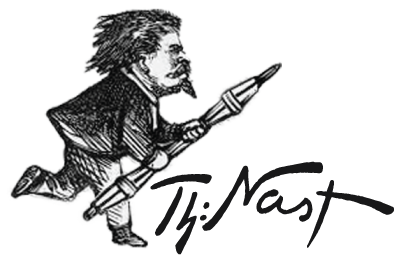Cartoon Categoriesmaryhastings2022-11-15T18:04:39+00:00
[fusion_blog_cpt layout=”medium” cpt_post_type=”cpt_cartoons” cus_taxonomy=”cpt_cartoons__cartoon_categories” cus_terms=”cartoon_categories__christmas” cus_terms_exclude=”” meta_terms1=”xxx__select_taxonomy” meta_terms2=”xxx__select_taxonomy” cpt_cfield1=”select_cfield” key_text1=”” cpt_cfield2=”select_cfield” key_text2=”” blog_grid_columns=”3″ blog_grid_column_spacing=”40″ blog_masonry_grid_ratio=”1″ blog_masonry_width_double=”2000″ equal_heights=”no” number_posts=”-1″ offset=”0″ pull_by=”category” cat_slug=”” exclude_cats=”” tag_slug=”” exclude_tags=”” orderby=”meta_value” sorting_key=”category_sequence” order=”ASC” thumbnail=”yes” title=”yes” title_link=”yes” content_alignment=”” excerpt=”yes” excerpt_length=”60″ strip_html=”no” meta_all=”no” meta_author=”no” meta_categories=”no” meta_comments=”no” meta_date=”no” meta_link=”yes” meta_tags=”no” scrolling=”pagination” grid_box_color=”rgba(233,30,99,0)” hue=”” saturation=”” lightness=”” alpha=”” grid_element_color=”” grid_separator_style_type=”” grid_separator_color=”” padding_top=”” padding_right=”” padding_bottom=”” padding_left=”” hide_on_mobile=”small-visibility,medium-visibility,large-visibility” class=”” id=”” /]
[fusion_blog_cpt layout=”medium” cpt_post_type=”cpt_cartoons” cus_taxonomy=”cpt_cartoons__cartoon_categories” cus_terms=”cartoon_categories__boss-tweed” cus_terms_exclude=”” meta_terms1=”xxx__select_taxonomy” meta_terms2=”xxx__select_taxonomy” cpt_cfield1=”select_cfield” key_text1=”” cpt_cfield2=”select_cfield” key_text2=”” blog_grid_columns=”3″ blog_grid_column_spacing=”40″ blog_masonry_grid_ratio=”1″ blog_masonry_width_double=”2000″ equal_heights=”no” number_posts=”-1″ offset=”0″ pull_by=”category” cat_slug=”” exclude_cats=”” tag_slug=”” exclude_tags=”” orderby=”meta_value” sorting_key=”category_sequence” order=”ASC” thumbnail=”yes” title=”yes” title_link=”yes” content_alignment=”” excerpt=”yes” excerpt_length=”60″ strip_html=”no” meta_all=”no” meta_author=”no” meta_categories=”no” meta_comments=”no” meta_date=”no” meta_link=”yes” meta_tags=”no” scrolling=”pagination” grid_box_color=”rgba(233,30,99,0)” hue=”” saturation=”” lightness=”” alpha=”” grid_element_color=”” grid_separator_style_type=”” grid_separator_color=”” padding_top=”” padding_right=”” padding_bottom=”” padding_left=”” hide_on_mobile=”small-visibility,medium-visibility,large-visibility” class=”” id=”” /]
[fusion_blog_cpt layout=”medium” cpt_post_type=”cpt_cartoons” cus_taxonomy=”cpt_cartoons__cartoon_categories” cus_terms=”cartoon_categories__civil-war” cus_terms_exclude=”” meta_terms1=”xxx__select_taxonomy” meta_terms2=”xxx__select_taxonomy” cpt_cfield1=”select_cfield” key_text1=”” cpt_cfield2=”select_cfield” key_text2=”” blog_grid_columns=”3″ blog_grid_column_spacing=”40″ blog_masonry_grid_ratio=”1″ blog_masonry_width_double=”2000″ equal_heights=”no” number_posts=”-1″ offset=”0″ pull_by=”category” cat_slug=”” exclude_cats=”” tag_slug=”” exclude_tags=”” orderby=”meta_value” sorting_key=”category_sequence” order=”ASC” thumbnail=”yes” title=”yes” title_link=”yes” content_alignment=”” excerpt=”yes” excerpt_length=”60″ strip_html=”no” meta_all=”no” meta_author=”no” meta_categories=”no” meta_comments=”no” meta_date=”no” meta_link=”yes” meta_tags=”no” scrolling=”pagination” grid_box_color=”rgba(233,30,99,0)” hue=”” saturation=”” lightness=”” alpha=”” grid_element_color=”” grid_separator_style_type=”” grid_separator_color=”” padding_top=”” padding_right=”” padding_bottom=”” padding_left=”” hide_on_mobile=”small-visibility,medium-visibility,large-visibility” class=”” id=”” /]
[fusion_blog_cpt layout=”medium” cpt_post_type=”cpt_cartoons” cus_taxonomy=”cpt_cartoons__cartoon_categories” cus_terms=”cartoon_categories__shakespeare” cus_terms_exclude=”” meta_terms1=”xxx__select_taxonomy” meta_terms2=”xxx__select_taxonomy” cpt_cfield1=”select_cfield” key_text1=”” cpt_cfield2=”select_cfield” key_text2=”” blog_grid_columns=”3″ blog_grid_column_spacing=”40″ blog_masonry_grid_ratio=”1″ blog_masonry_width_double=”2000″ equal_heights=”no” number_posts=”-1″ offset=”0″ pull_by=”category” cat_slug=”” exclude_cats=”” tag_slug=”” exclude_tags=”” orderby=”meta_value” sorting_key=”category_sequence” order=”ASC” thumbnail=”yes” title=”yes” title_link=”yes” content_alignment=”” excerpt=”yes” excerpt_length=”60″ strip_html=”no” meta_all=”no” meta_author=”no” meta_categories=”no” meta_comments=”no” meta_date=”no” meta_link=”yes” meta_tags=”no” scrolling=”pagination” grid_box_color=”rgba(233,30,99,0)” hue=”” saturation=”” lightness=”” alpha=”” grid_element_color=”” grid_separator_style_type=”” grid_separator_color=”” padding_top=”” padding_right=”” padding_bottom=”” padding_left=”” hide_on_mobile=”small-visibility,medium-visibility,large-visibility” class=”” id=”” /]
[fusion_blog_cpt layout=”medium” cpt_post_type=”cpt_cartoons” cus_taxonomy=”cpt_cartoons__cartoon_categories” cus_terms=”cartoon_categories__shakespeare” cus_terms_exclude=”” meta_terms1=”xxx__select_taxonomy” meta_terms2=”xxx__select_taxonomy” cpt_cfield1=”select_cfield” key_text1=”” cpt_cfield2=”select_cfield” key_text2=”” blog_grid_columns=”3″ blog_grid_column_spacing=”40″ blog_masonry_grid_ratio=”1″ blog_masonry_width_double=”2000″ equal_heights=”no” number_posts=”-1″ offset=”0″ pull_by=”category” cat_slug=”” exclude_cats=”” tag_slug=”” exclude_tags=”” orderby=”meta_value” sorting_key=”category_sequence” order=”ASC” thumbnail=”yes” title=”yes” title_link=”yes” content_alignment=”” excerpt=”yes” excerpt_length=”60″ strip_html=”no” meta_all=”no” meta_author=”no” meta_categories=”no” meta_comments=”no” meta_date=”no” meta_link=”yes” meta_tags=”no” scrolling=”pagination” grid_box_color=”rgba(233,30,99,0)” hue=”” saturation=”” lightness=”” alpha=”” grid_element_color=”” grid_separator_style_type=”” grid_separator_color=”” padding_top=”” padding_right=”” padding_bottom=”” padding_left=”” hide_on_mobile=”small-visibility,medium-visibility,large-visibility” class=”” id=”” /]
[fusion_blog_cpt layout=”medium” cpt_post_type=”cpt_cartoons” cus_taxonomy=”cpt_cartoons__cartoon_categories” cus_terms=”cartoon_categories__lincoln” cus_terms_exclude=”” meta_terms1=”xxx__select_taxonomy” meta_terms2=”xxx__select_taxonomy” cpt_cfield1=”select_cfield” key_text1=”” cpt_cfield2=”select_cfield” key_text2=”” blog_grid_columns=”3″ blog_grid_column_spacing=”40″ blog_masonry_grid_ratio=”1″ blog_masonry_width_double=”2000″ equal_heights=”no” number_posts=”-1″ offset=”0″ pull_by=”category” cat_slug=”” exclude_cats=”” tag_slug=”” exclude_tags=”” orderby=”meta_value” sorting_key=”category_sequence” order=”ASC” thumbnail=”yes” title=”yes” title_link=”yes” content_alignment=”” excerpt=”yes” excerpt_length=”60″ strip_html=”no” meta_all=”no” meta_author=”no” meta_categories=”no” meta_comments=”no” meta_date=”no” meta_link=”yes” meta_tags=”no” scrolling=”pagination” grid_box_color=”rgba(233,30,99,0)” hue=”” saturation=”” lightness=”” alpha=”” grid_element_color=”” grid_separator_style_type=”” grid_separator_color=”” padding_top=”” padding_right=”” padding_bottom=”” padding_left=”” hide_on_mobile=”small-visibility,medium-visibility,large-visibility” class=”” id=”” /]
[fusion_blog_cpt layout=”medium” cpt_post_type=”cpt_cartoons” cus_taxonomy=”cpt_cartoons__cartoon_categories” cus_terms=”cartoon_categories__inflation” cus_terms_exclude=”” meta_terms1=”xxx__select_taxonomy” meta_terms2=”xxx__select_taxonomy” cpt_cfield1=”select_cfield” key_text1=”” cpt_cfield2=”select_cfield” key_text2=”” blog_grid_columns=”3″ blog_grid_column_spacing=”40″ blog_masonry_grid_ratio=”1″ blog_masonry_width_double=”2000″ equal_heights=”no” number_posts=”-1″ offset=”0″ pull_by=”category” cat_slug=”” exclude_cats=”” tag_slug=”” exclude_tags=”” orderby=”meta_value” sorting_key=”category_sequence” order=”ASC” thumbnail=”yes” title=”yes” title_link=”yes” content_alignment=”” excerpt=”yes” excerpt_length=”60″ strip_html=”no” meta_all=”no” meta_author=”no” meta_categories=”no” meta_comments=”no” meta_date=”no” meta_link=”yes” meta_tags=”no” scrolling=”pagination” grid_box_color=”rgba(233,30,99,0)” hue=”” saturation=”” lightness=”” alpha=”” grid_element_color=”” grid_separator_style_type=”” grid_separator_color=”” padding_top=”” padding_right=”” padding_bottom=”” padding_left=”” hide_on_mobile=”small-visibility,medium-visibility,large-visibility” class=”” id=”” /]
[fusion_blog_cpt layout=”medium” cpt_post_type=”cpt_cartoons” cus_taxonomy=”cpt_cartoons__cartoon_categories” cus_terms=”cartoon_categories__presidential-election-losers” cus_terms_exclude=”” meta_terms1=”xxx__select_taxonomy” meta_terms2=”xxx__select_taxonomy” cpt_cfield1=”select_cfield” key_text1=”” cpt_cfield2=”select_cfield” key_text2=”” blog_grid_columns=”3″ blog_grid_column_spacing=”40″ blog_masonry_grid_ratio=”1″ blog_masonry_width_double=”2000″ equal_heights=”no” number_posts=”-1″ offset=”0″ pull_by=”category” cat_slug=”” exclude_cats=”” tag_slug=”” exclude_tags=”” orderby=”meta_value” sorting_key=”category_sequence” order=”ASC” thumbnail=”yes” title=”yes” title_link=”yes” content_alignment=”” excerpt=”yes” excerpt_length=”60″ strip_html=”no” meta_all=”no” meta_author=”no” meta_categories=”no” meta_comments=”no” meta_date=”no” meta_link=”yes” meta_tags=”no” scrolling=”pagination” grid_box_color=”rgba(233,30,99,0)” hue=”” saturation=”” lightness=”” alpha=”” grid_element_color=”” grid_separator_style_type=”” grid_separator_color=”” padding_top=”” padding_right=”” padding_bottom=”” padding_left=”” hide_on_mobile=”small-visibility,medium-visibility,large-visibility” class=”” id=”” /]
